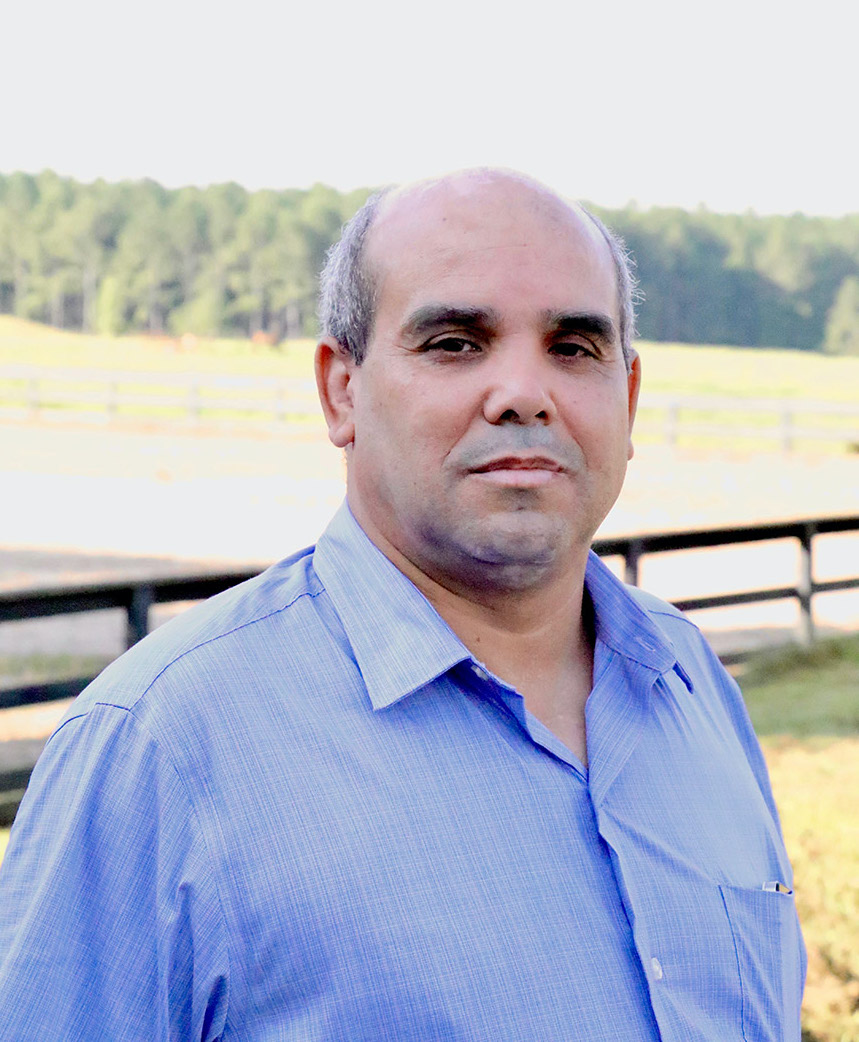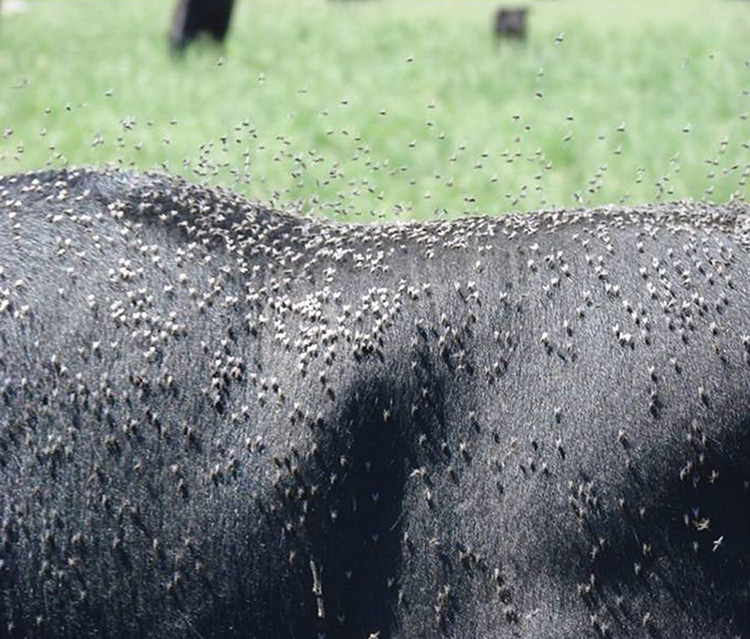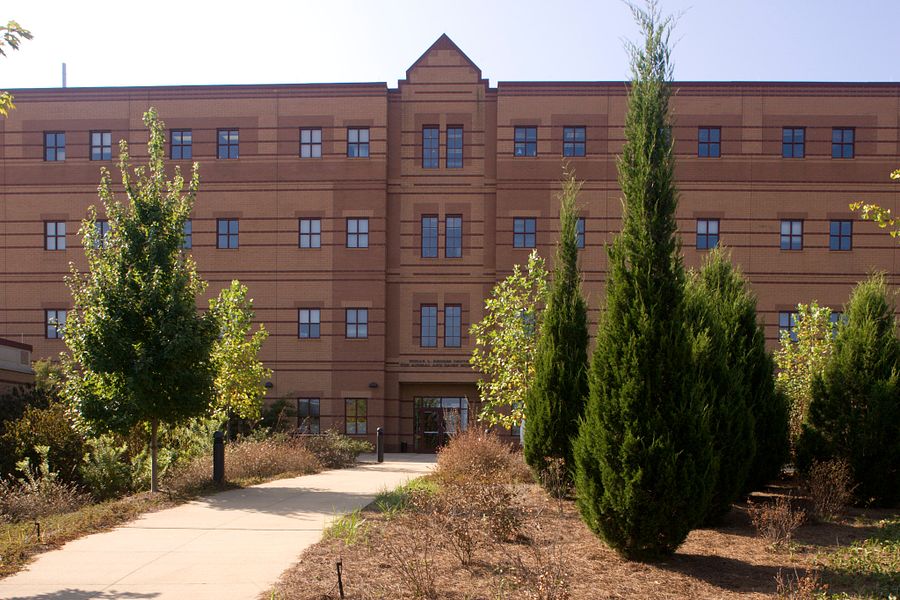
On a warm summer night in the South, it’s not unusual to get a few mosquito bites — but some of us tend to get bitten more frequently than others, a result of genetic predispositions that make us more attractive to the insects.
It’s not just humans and mosquitos whose relationship is determined by genetics, but also cows and horn flies, according Romdhane Rekaya, a professor in the University of Georgia’s College of Agricultural and Environmental Sciences.
Horn flies are one of the most economically detrimental pests for the cattle industry, with an average of $1.8 billion in economic damages per year. These small, black flies remain on the cattle almost continuously and use their piercing bite to draw blood, which is their only source of food. In order to mitigate the pain and discomfort of these pests, cattle will swat with their tails, move their heads and kick at their belly, among other generally unsuccessful methods.
Based in the Department of Animal and Dairy Science, Rekaya is leading a cross-disciplinary team of researchers to address the horn fly issue through the development of advanced data collection tools and artificial intelligence (AI) approaches.
Phenotypic, physiological, behavioral and genomic information will be integrated through sophisticated AI tools to derive the needed response traits and to dissect their genetic basis.
Finding genetic solutions
Funded by a $650,000 grant from the U.S. Department of Agriculture's National Institute of Food and Agriculture and a small industry grant from the Georgia beef commission, Rekaya hopes UGA’s team will be able to address the horn fly issue, a problem that is as old as cattle themselves.
“We are experts in animal breeding and genetics — we’ve been able to select for several traits resulting in spectacular improvement in productivity, so why not try to make the animal itself a part of the solution? We are planning to harness the animal genetic potential to address the issue of horn fly to increase productivity and to reduce the environmental impact and insecticide resistance,” Rekaya said.
With increased horn fly numbers, cattle tend to lose growth efficiency as a result of reduced feed intake and the extra energy expenditure involved in tail swatting and head movement. Damaged hides and other cosmetic defects, as well as reduced productivity, can result in decreased returns and potential losses in revenue for producers.
Despite the negative impact on productivity and animal welfare, horn fly research has proven difficult because there is not currently a reliable, scientifically derived estimate of the onset of the economic injury threshold at the individual animal level due to horn fly abundance. Without this critical information assessing the impact of horn fly abundance on productivity, scientists are ill-equipped to devise genetic solutions to mitigate the problem.
Horn fly abundance, the onset of economic injury threshold, and the rate of decay of performance after onset vary from animal to animal.
“Unfortunately, we do not have reliable, cost-effective and scalable approaches to assess these responses. Successfully tackling this problem has the potential to substantially improve beef cattle productivity,” Rekaya said.
The research team includes experts in animal science, entomology and veterinary medicine who will collect various data points from cattle in the study to identify which traits determine an animal’s unique tolerance and resistance levels. They are also working to create computational tools and resources to make automated assessments of horn fly abundance.
Building an automated system to collect data

Once up and running, the system is expected to be able to receive and process images collected with mobile devices used by producers or farm personnel. The automated system will allow researchers to estimate horn fly abundance, onset of economic injury and decay of performance after onset at the individual level — and will pave the way to identify animals with higher levels of resistance and tolerance to horn flies.
Identifying individuals with favorable traits will open the door for the selection of animals with higher natural tolerance and resistance to horn flies, potentially lowering industry reliance on insecticides and reducing the amount of money and time producers have to invest in control. Additionally, insecticides can kill the horn fly’s few natural predators, exacerbating an already damaging problem.
“Hopefully one day, we will be able to identify superior bulls and cows that will be used in the breeding scheme to produce the next generations of more horn-fly resistant and tolerant cattle without compromising productivity and while reducing the need for insecticides and their impact on the environment,” Rekaya said.
Before Rekaya’s team can begin tackling the larger issue of breeding horn fly-resistant animals, they’re planning first to work with cattle at UGA’s Eatonton Beef Research Unit at the Northwest Georgia Research and Education Center in Calhoun and the U.S. Meat Animal Research Center in Nebraska to develop an automated system that would rely on digital image features, blood enzymes, skin biopsies, and physiological and behavioral parameters to estimate fly abundance, resistance and tolerance.
Reliance on an automated system will decrease the effort for both producers and researchers involved in this project.
“Modern agriculture is a high-tech science — we have the capacity to automate so many aspects of our work in order to lighten the load of producers. Ultimately, producers are not going to be out in the field counting the flies on their cattle,” Rekaya said. “We are going to use technologies and artificial intelligence to do that for them so that they can focus on their work in the field and we can focus on ours in the lab.”
Rekaya said that this project is an early step toward bringing increased integrated precision agriculture efforts to animal science.
“We want to move the needle forward when it comes to technology in animal science. Collecting data is hard and costly, particularly when it comes to entities as small and subjective as the number of flies on an animal. Technology — like having a producer send a cell phone image to our automated system — makes it easier to find solutions to big problems in animal production and its relationship with animal welfare and environmental impact,” he said.
For more information on current research in the Department of Animal and Dairy Science, visit animaldairy.uga.edu/research.






